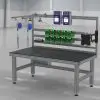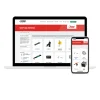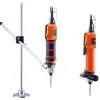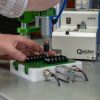In the fast-paced world of manufacturing, optimizing assembly processes to reduce training and rework costs while maintaining product quality is essential for any business looking to stay competitive. If you’ve ever had your washing machine stop spinning when you open the lid, then you’ve experienced Poka-Yoke in your everyday life. The concept of Poka-Yoke and error-proofing techniques have emerged as indispensable tools. Poka-Yoke, a Japanese term meaning “mistake-proofing” or “inadvertent error prevention,” refers to a set of methods and devices that are designed to prevent errors and defects from occurring during assembly processes. By integrating intelligent mechanisms and fool proofing approaches into threaded assembly procedures, manufacturers can mitigate the risk of mistakes and ultimately deliver flawless products to the market. Stemming from Toyota production, Poka-Yoke ensures processes are completed in the correct order and with no mistakes. As automation and demands grow, every business is looking to increase profits and decrease cycle times in manual production. Consider implementing some or all of the following elements to decrease training and rework costs and grow your business’ bottom line.
Augmented Reality Assembly Guides
One of the most significant challenges in manual threaded assembly is ensuring that operators follow the correct procedures. Augmented Reality (AR) Assembly Guides can revolutionize the training process by providing real-time visual instructions to operators as they work. Operators can receive step-by-step guidance, reducing the learning curve and minimizing errors. This technology allows businesses to train new operators faster, improve productivity, and decrease rework due to human error.
Pick-to-Light Systems
Picking the right components during threaded assembly is critical to prevent errors and ensure final product quality. Pick-to-Light systems use lighted indicators to guide operators to the correct parts, eliminating the risk of selecting the wrong components. These systems provide instant feedback, enabling operators to work with precision and efficiency.
Component Identification
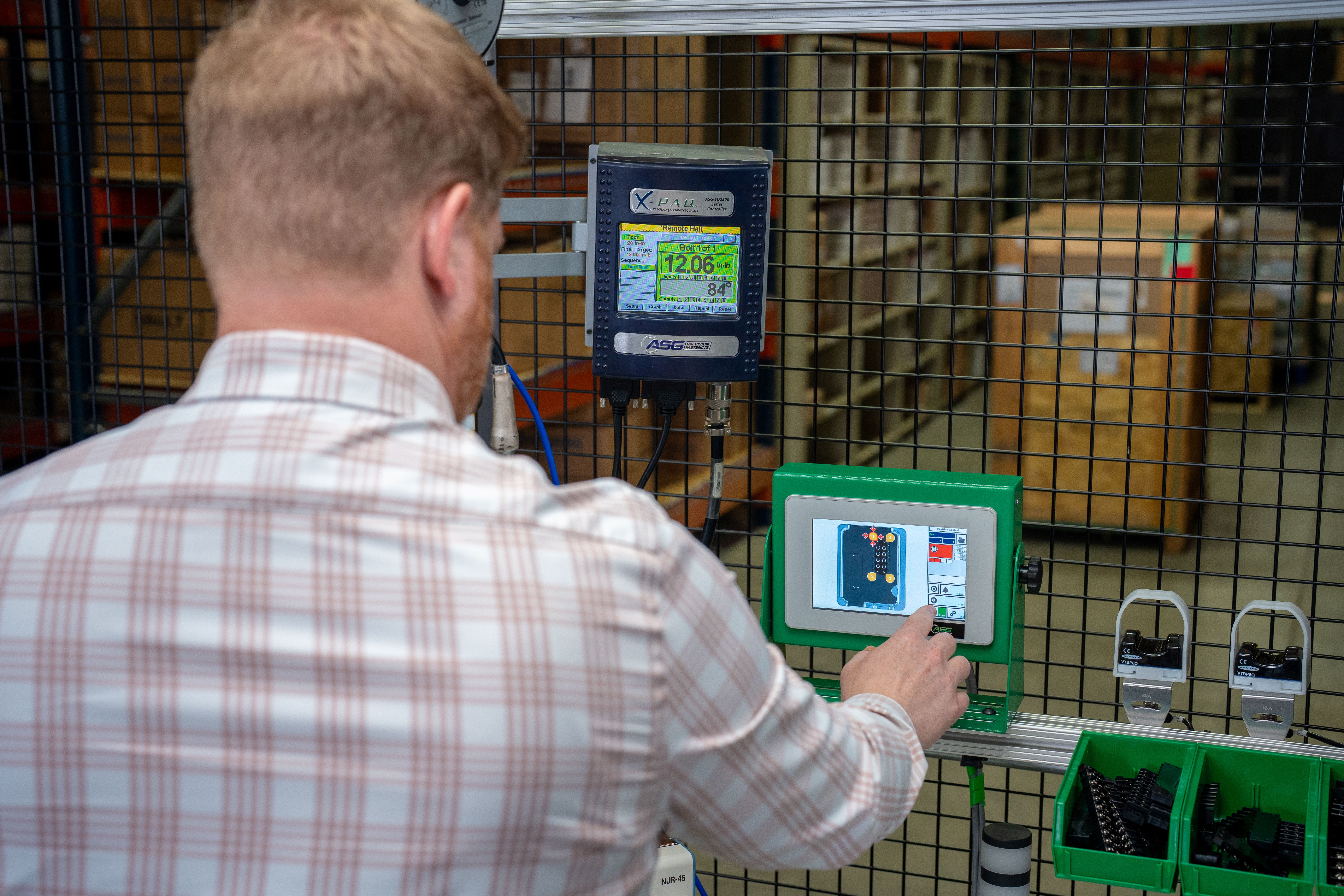
Each component involved in the threaded assembly process can be assigned a barcode. As workers scan these barcodes, the system can instantly identify the specific part, ensuring the correct components are being used, and the correct torque is being applied to the right fastener. Adding barcoding to your assembly cell can also be used for workstation verification, sequence control, error detection, tool verification, training, and documentation, making it a useful error-proofing tool.
Angle monitoring
Angle monitoring, available as a standard feature on the X-PAQ, is sometimes overlooked as an error proofing method, and it comes free with
every X-PAQ system. A tool will run the fastener to its assigned target torque. But if the bolt or screw cross threads (one of many rundown pitfalls), the tool is still going to hit the target torque and tell the operator that the fastening is good. Using an angle monitoring strategy will ensure that the fastener seats and hits the target torque by measuring the number of revolutions from a torque threshold all the way until the target torque is achieved.
Encoder Torque Arm
Torque arms with encoders are cutting-edge systems designed to ensure precise torque application in threaded assembly processes. The torque arms feature encoders that provide real-time feedback. By integrating an encoder torque arm with navigation programming like the ASG Nav-P, you are able to ensure that operators apply the correct torque for the assembly process in the correct sequence. By presenting a clear and intuitive user interface, operators can easily access assembly instructions and follow the correct workflow, reducing the likelihood of errors and minimizing rework.
The importance of optimizing assembly processes through error-proofing measures like Poka-Yoke cannot be overstated in today’s competitive manufacturing landscape. By embracing innovative solutions such as augmented reality assembly guides, pick-to-light systems, encoder torque arms, and navigation programming, manufacturers can significantly reduce training and rework costs while ensuring consistent product quality. All of these elements can be combined on the ASG SmartBench, demonstrating the power of integration to achieve precise torque application and proper assembly, ensuring businesses can thrive amidst automation and growing demands. With these advancements, manufacturers can pave the way for increased profits and improved cycle times in manual production, all while delivering products that meet the highest standards of excellence.
Contact an assembly expert today to discuss how ASG can help your business work smarter: [email protected].
